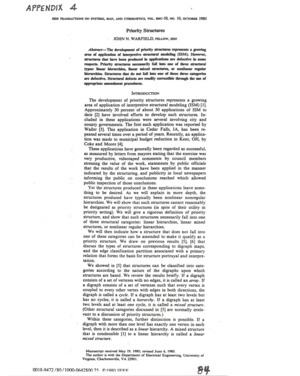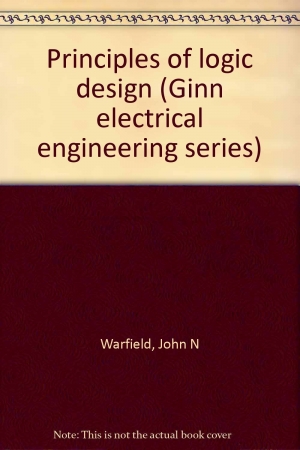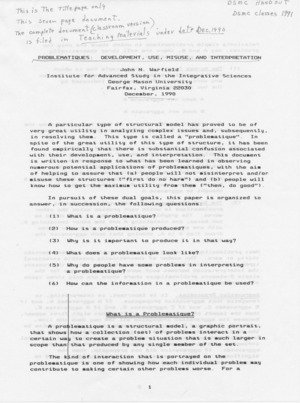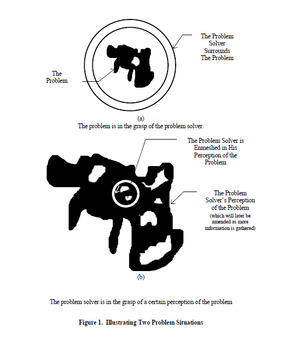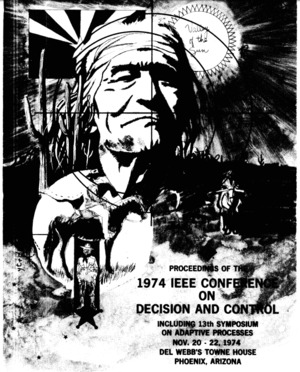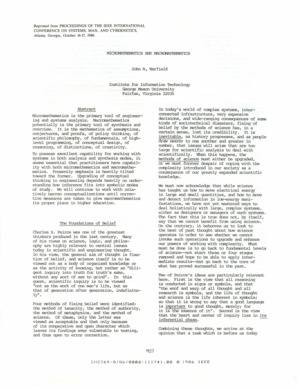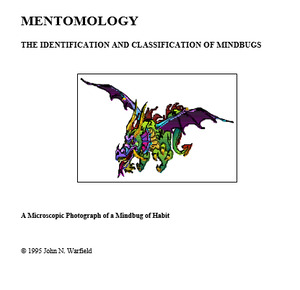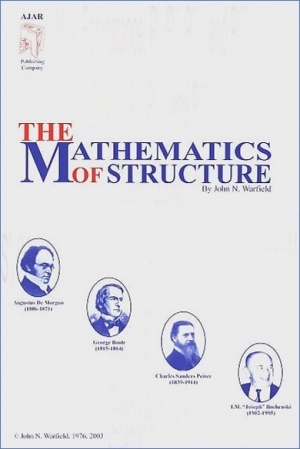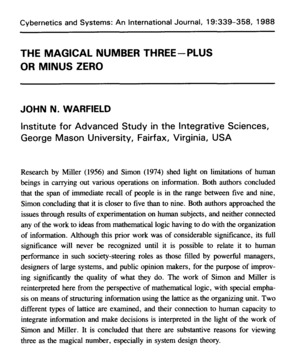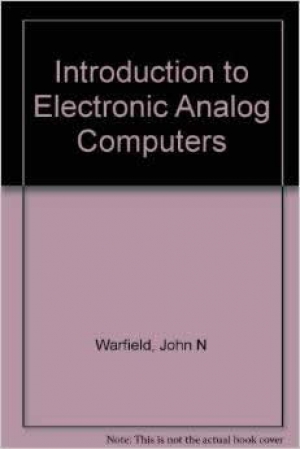Tom Warfield
Priority Structures
This paper comprises part of the theory needed for writing ISM software, giving techniques for correcting structural defects (e.g. non-regular hierarchical structures) when using Interpretive Structural Modeling. The paper was included as part Warfield's GRAILS proposal (ADA Syntax Study and Recommendations: A Proposal to the Software Productivity Consortium, Part 1, A Graphically-Integrated Language System: A Proposal to the Software Consortium, Part 2), as an appendix.
Principles of Logic Design
A reference book and college text for engineers, written in the early years of electronic computer development.
Problematiques: Development, Use, Misuse, and Interpretation
The cascading weight of transitivity is made clear using layman’s terms. Explains the need for publicly viewed structural models and discusses use of, and need for, problematiques. Used as a classroom handout at the Defense Systems Management College where Warfield conducted a series of Interactive Management workshops and lectures for the teaching staff.
Organizations and Systems Learning
Considered by Warfield to be one of his most important papers, this is a description of the seven Interactive Management processes developed at the Center for Interactive Management at the University of Virginia in Charlottesville. It deals with an approach to how humans might be able to tackle and solve the "gigantic mess" problems of society which are currently beyond human endeavor and often beyond human intellectual grasp. This was the Society for General Systems Research (SGSR) Presidential Address, presented at 27th Annual Meeting SGSR, Book-Cadillac Hotel, Detroit, Michigan on 26 May 1983.
Modularization of Large Econometric Models: An Application of Structural Modeling
To view the full copyrighted abstract written in the authors' own words please use http://ieeexplore.ieee.org/document/4045316/?reload=true&arnumber=4045316%2F#document-tabs.
Micromathematics and Macromathematics
Building on Charles S. Peirce's ideas on symbolic logic and the organization of human knowledge, this is a presentation of a model of information-gathering and processing which will reliably and incrementally increase humanity's storehouse of accurate, usable scientific knowledge. In part, this paper is a protest against current enshrinement of the superficial and insufficient 'artificial intelligence', (a widely utilized methodology which is said to be superficial and insufficient to human needs). Includes discussion of the “Cosmic Partition,” which he introduced at the 1985 SGSR Annual meeting in Los Angeles in his paper "On the Choice of Frames for Systems Studies."
Mentomology: The Identification and Classification of Mindbugs
A satirical attack on fuzzy or faddish thinking. This manuscript originated as an Email contribution to the Learning Organization List-serve.
The Mathematics of Structure
Augmented by a 2-page introductory Preface written in November 2002, The Mathematics of Structure consists of Chapters 8 to 14 of Warfield's Societal Systems.
The book focuses on the mathematics behind Interpretive Structural Modeling (ISM). It is an enlargement of an IASIS Report printed in 1997 which contained only three chapters. Figures were copied from Societal Systems.
The Magical Number Three--Plus or Minus Zero
The work of George Miller and H. A. Simon is reinterpreted from the perspective of mathematical logic, showing substantive reason for the conclusion that three is the 'magical number,' especially in system design theory. For the transparencies to accompany this lecture, see "The Magical Number Three--Plus or Minus Zero (transparencies)." Presented at the International Conference of Society for General Systems Research, 1-6 June 1987, Budapest, Hungary.
Introduction to Electronic Analog Computers
A reference book and college text for engineers, containing index and bibliographic references. It was written in the first years of electronic computer study and development

